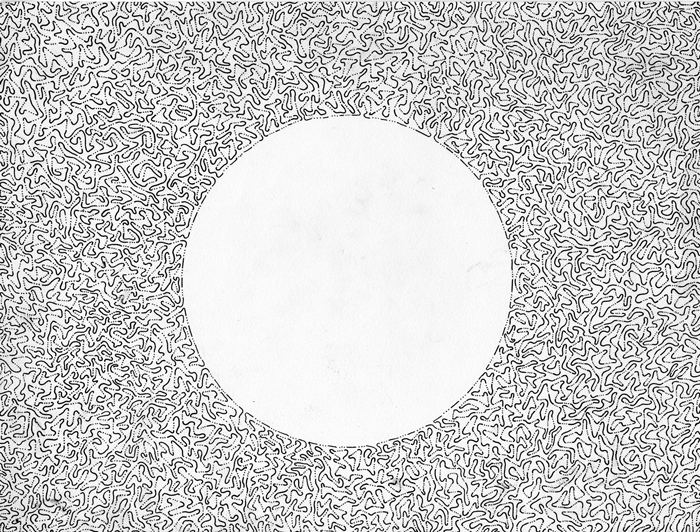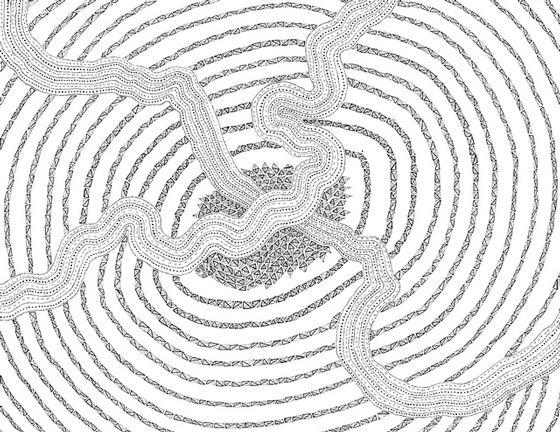Guest post by Daniel Friedman. GSA-art features the creative works of scientists, particularly geneticists. Read more about the series from GSA President Stan Fields. If you would like to submit your own work or nominate someone else’s, please send an email GenesToGenomes@genetics-gsa.org with “GSA-Art” in the subject line.
Inspirations
The world around us is flush with patterns. My favorite way to analyze these patterns in the daytime is the scientific method, and at nighttime I prefer art. Scientific rigor lends itself well to the clarity and exactness of daytime. But at night the darkness descends, the ambiguities proliferate, and less-than-logical artistic pursuits reign supreme. In the daytime-mindset, each pixel of a drawing is defined, meaningless, static; objectively either black or white. Yet in the nighttime-mindset, the experience of viewing a drawing is imbued with rhythm and softness, with movement and subjectivity. In art as in life, I think that “meaning” enters into the whole picture, at the level of the whole picture. This holistic perspective is often banished from our teaching and research, at an incalculable cost to society. More drawings can be found here. And remember: Live. Laugh. Mitose.
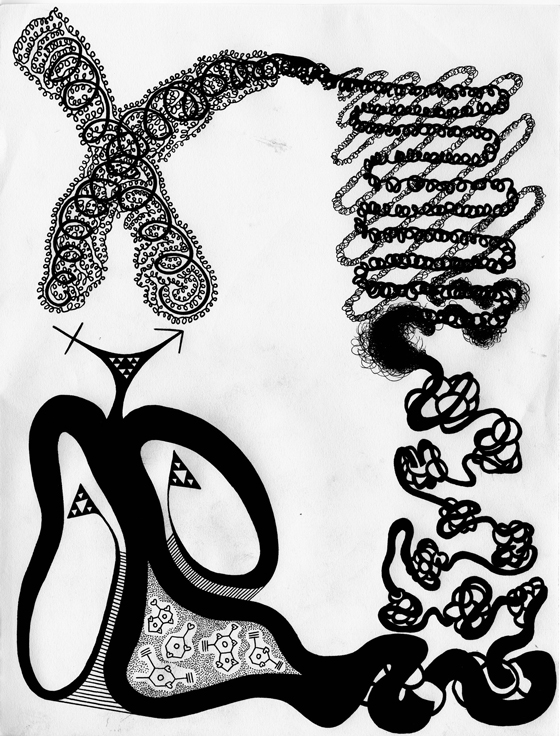
The Reactive Genome. https://www.flickr.com/photos/daniel_friedman/25036466751
Research
How do ant colonies behave adaptively at the collective level, when each individual worker acts without knowledge of global conditions? With Professor Deborah Gordon at Stanford University, I am researching how colonies of the red harvester ant (Pogonomyrmex barbatus) regulate foraging behavior. To do this, I quantify patterns of gene expression, carry out behavioral experiments in the field, and perform neurochemical analysis of ant brains. I want to understand how individual-level neurophysiological variation is related to patterns of inter-colony behavioral variation. Directly, this work addresses the role of natural variation in individual gene expression for multilevel eco-evolutionary systems. Indirectly this work has implications for the understanding, design, and control of distributed systems such as transportation networks, the internet, and the brain.
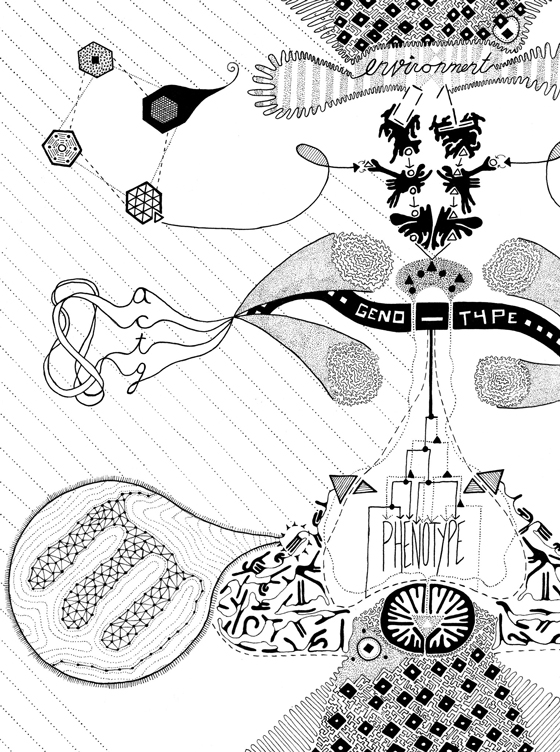
Central Dogma Part-Dieu. https://www.flickr.com/photos/daniel_friedman/20091245320
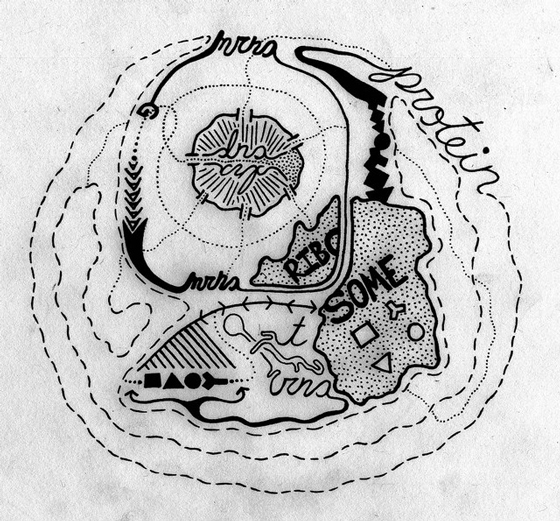
De-Central Dogma. https://www.flickr.com/photos/daniel_friedman/30395377544/
About the author: Daniel Friedman is a graduate student in Biology at Stanford University.


